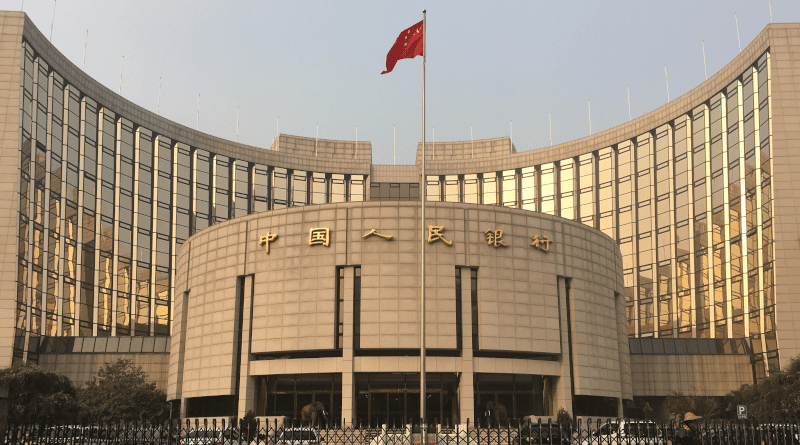China’s Monetary Policy Sees Subtle Changes – Analysis
By Anbound
By Wei Hongxu
The website of the People’s Bank of China (PBoC) reported that the Monetary Policy Committee held its first quarter meeting (the 100th meeting in total) in Beijing in 2023. Based on the meeting communiqué released on April 14, although the tone of the monetary policy has not changed, there have been adjustments in the assessment of the economic situation and the focus of future monetary policy compared to before. Researchers at ANBOUND believe that this indicates that there may be some changes in the implementation of future monetary policy, continuing the approach of “precision regulation”.
In terms of the assessment of the macroeconomic situation, there are some changes in the meeting communiqué compared to previous statements. Firstly, the description of “external environment turbulence and instability” has been removed, and “increased volatility in international financial markets” has been added. Secondly, China’s domestic situation is described as “showing signs of recovery, but the foundation of the recovery is not yet solid”, and the “triple pressures” that occurred repeatedly last year are no longer present. From the perspective of the external environment, although the impact of the recent crisis in the European and American banking industry is still ongoing, the overall trend of inflation and the global economic slowdown is becoming clearer. In the view of the PBoC, although the contraction of external demand is a high-probability event, the predictability of the international situation has increased, which is a positive factor. From the domestic situation, the absence of the “triple pressures” means that the PBoC believes that after the relaxation of COVID-19 measures, the Chinese economy is showing signs of improvement, which is more optimistic than last year overall. However, the economic recovery has yet to be solid. This is consistent with ANBOUND’s previous assessment.
Furthermore, in terms of policy implementation, the communiqué of this year’s first quarter meeting highlights the importance of “effectively implementing cross-cyclical regulation”, in contrast to the previous quarter’s emphasis on “strengthening cross-cyclical and counter-cyclical regulation”. This shift suggests that the focus is moving away from demand-side measures such as monetary loosening for promoting demand growth, towards supply-side adjustments and the strengthening of the structural policy role of monetary policy. Based on the policy orientation in recent years, China’s monetary policy has consistently remained within the “prudent” range, with adjustments between “counter-cyclical” and “cross-cyclical” approaches depending on changes in the economic situation. On one hand, with the country’s domestic economy no longer providing a basis for a “loose” approach, a “mass easing” approach is unlikely to be adopted. On the other hand, the precise regulation approach signifies that supply-side reforms remain a long-term focus driven by monetary policy, unaffected by short-term changes in the demand side. This reflects the central governmental level’s fundamental attitude towards the overall economy of the country.
The statement in the central bank’s communiqué partially addressed the market’s concerns about deflation. Although the Consumer Price Index (CPI) and Producer Price Index (PPI) have been declining in recent months, the CPI is still positive. The decrease in money supply growth has also been influenced by the moderate adjustments in the PBoC’s overall policy. Researchers at ANBOUND believe that in the context of China’s ongoing economic recovery, this “deflation” does not truly reflect a contraction in price levels and the real economy, but rather a mismatch between money supply and demand.
In the foreseeable future, China’s overall macro leverage level will be maintained at a stable level, and the overall debt growth rate will not exceed the economic growth rate. This is the reason why its monetary policy adheres to the principle of “maintaining the growth rate of money supply and social financing essentially in line with nominal economic growth rate”. It is stated in the communiqué that the basic approach to overall quantity policy this year is to “maintain reasonable credit growth with a stable pace”. The balance of credit growth will be a key indicator of future overall quantity policy. We expect that after the economic situation improves and shows positive signs of recovery, the PBoC’s easing measures may weaken, and the focus may shift back to promoting the implementation of structural policies. However, structural policies also have their limits, which means they will be implemented with a focus on key areas with moderate adjustments and a balance between progress and retreat. In the next stage of China’s monetary policy this year, similar to fiscal policy, there will be a greater emphasis on enhancing policy effectiveness.
Overall, the general tone of the PBoC’s monetary policy remains “to pursue progress while ensuring stability”. For monetary policy, while emphasizing “continuity, stability, and sustainability”, the meeting once again stressed the importance of policy coordination, balancing “expanding domestic demand” and “adjusting supply”, balancing internal and external factors, and ultimately achieving an equilibrium between “stable growth” and “risk prevention”. As the effectiveness of monetary policy itself decreases, policy coordination becomes even more important. China’s monetary policy space is constantly narrowing, and the difficulty of achieving policy goals is increasing. This means that the difficulty of macro policy adjustment in the country is getting greater, while the situation faced by the economic recovery is becoming increasingly complex.
Final analysis conclusion:
The People’s Bank of China’s monetary policy committee’s first quarter meeting in 2023 revealed a positive assessment of both the domestic and international economic situation, indicating an improved outlook for economic recovery. However, the committee also acknowledged that the economic recovery is facing increasing complexity and challenges. While the meeting emphasized the need to “pursue progress while ensuring stability” as the overarching approach, it is anticipated that the focus of domestic monetary policy may undergo a new round of transformation, with a potential shift towards implementing structural policies to address emerging issues. This suggests a proactive and adaptive approach to economic management in the future, as the central bank navigates evolving economic dynamics.
Wei Hongxu is a researcher at ANBOUND

